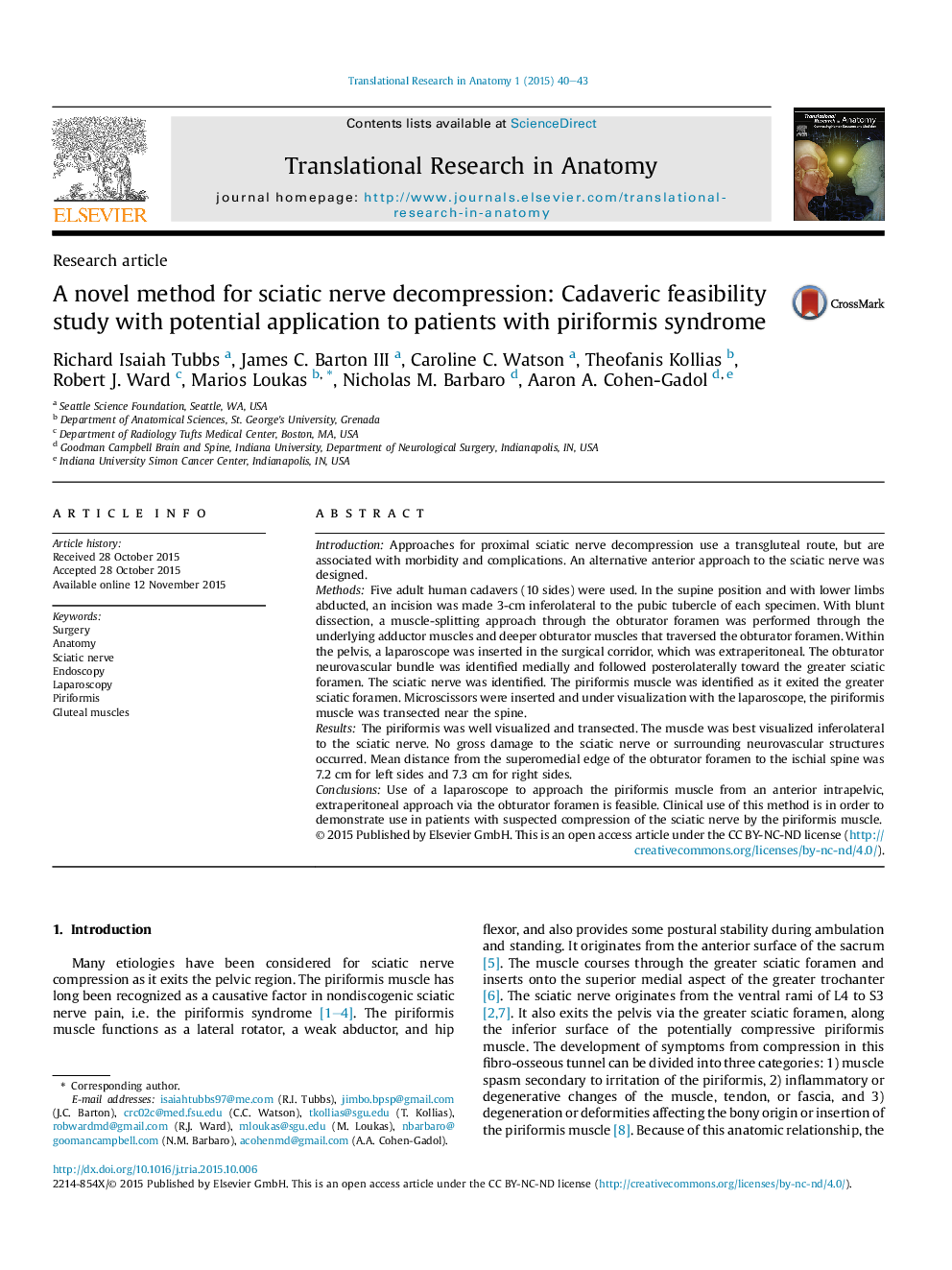| Article ID | Journal | Published Year | Pages | File Type |
|---|---|---|---|---|
| 3278491 | Translational Research in Anatomy | 2015 | 4 Pages |
IntroductionApproaches for proximal sciatic nerve decompression use a transgluteal route, but are associated with morbidity and complications. An alternative anterior approach to the sciatic nerve was designed.MethodsFive adult human cadavers (10 sides) were used. In the supine position and with lower limbs abducted, an incision was made 3-cm inferolateral to the pubic tubercle of each specimen. With blunt dissection, a muscle-splitting approach through the obturator foramen was performed through the underlying adductor muscles and deeper obturator muscles that traversed the obturator foramen. Within the pelvis, a laparoscope was inserted in the surgical corridor, which was extraperitoneal. The obturator neurovascular bundle was identified medially and followed posterolaterally toward the greater sciatic foramen. The sciatic nerve was identified. The piriformis muscle was identified as it exited the greater sciatic foramen. Microscissors were inserted and under visualization with the laparoscope, the piriformis muscle was transected near the spine.ResultsThe piriformis was well visualized and transected. The muscle was best visualized inferolateral to the sciatic nerve. No gross damage to the sciatic nerve or surrounding neurovascular structures occurred. Mean distance from the superomedial edge of the obturator foramen to the ischial spine was 7.2 cm for left sides and 7.3 cm for right sides.ConclusionsUse of a laparoscope to approach the piriformis muscle from an anterior intrapelvic, extraperitoneal approach via the obturator foramen is feasible. Clinical use of this method is in order to demonstrate use in patients with suspected compression of the sciatic nerve by the piriformis muscle.
